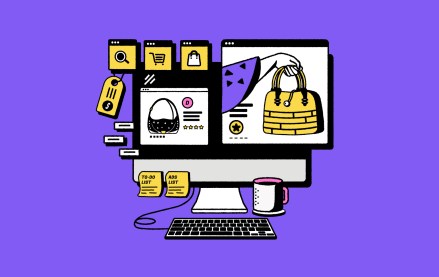Join us Dec. 1-3 in New Orleans for the Digiday Programmatic Marketing Summit

After toying around with a gift guide newsletter and a few months of experimenting with affiliate links, BuzzFeed is getting serious about e-commerce. In the past month, the digital publisher has nearly doubled the size of the editorial team focused on gift-based content, and it will dramatically increase the frequency and output of its gift guide newsletter while looking for ways to apply the lessons it’s learned to other verticals.
“I haven’t been excited about a newsletter like this in two years,” said Dan Oshinsky, BuzzFeed’s director of email, of the revamped gift guide newsletter.
Email might seem old-fashioned for BuzzFeed, but the age-old channel has been good to the publisher. While it does not disclose the total number of email subscribers it has, BuzzFeed added more than 1 million new ones to that total last year, according to a blog post published by its email technology provider, Campaign Monitor. Email routinely ranks among BuzzFeed’s top five or six sources of referral traffic, routinely ahead of Twitter and Pinterest.
Oshinsky declined to share specifics about how many people are subscribed to the gift guide newsletter too. But he noted that they are engaged: The gift guide newsletters boast an open rate of 45 percent, higher than those for its news newsletters (30 percent) and right around the open rate it gets for its Dog a Day newsletter; all of those figures are comfortably above the media industry average of 22 percent, according to MailChimp.
At its start, the Gift Guide newsletter was sent out twice each month, often consisting of just one or two products, usually aimed at an audience of younger women. But by the end of this coming holiday season, those newsletters will look and feel very different. Instead of a twice-monthly email featuring one or two products, the emails will be weekly, pegged not just to upcoming holidays or general milestones, but to readers’ personality and identity traits, a strategy that BuzzFeed editors have used to great success across its verticals.
In practical terms, that means readers can be recommended everything from a list of possible wedding gifts to Lipdicks, a line of lipsticks that have a very, um, distinctive shape.
“The thing that makes our gift guide content different is we don’t do a [single] gift guide,” said Jessica Probus, the director of BuzzFeed’s markets section, which publishes gift posts on BuzzFeed’s website. “We’ll do hundreds of them: Gifts for people who are medical nerds; gifts for people who love grammar; gifts for people who love to curse.”
The decision to shift the newsletter in this direction came mostly out of research. This past summer, a survey it conducted among its email subscribers found nearly two thirds of them wanted to receive more recommendations for gifts they could buy their friends. “We hadn’t really thought about reaching that type of audience before,” Oshinsky said. “BuzzFeed has always been about making content people want to share. We’d never thought about products people want to share.”
To that end, they broke its commerce-focused editorial team, called markets, out into its own operation, and began preparing to monetize all its markets content, enrolling in affiliate links technology provider Skimlinks and surveying its subscribers to get a more complete picture of how they shop on the internet. Before long, its business team was busy securing exclusive discounts and deals for its subscribers; so far, e-tailers including Fab, Bulletin and Shoeaholics have signed on.
Even though BuzzFeed makes its money selling branded content rather than display ads, it’s now part of a growing collection of publishers trying to build alternative revenue streams.
While BuzzFeed is later to the trend than some of its competitors, most of the field is in its early stages, doing everything from hiring e-commerce editors to integrating with Apple Pay.
And while companies like Gawker Media, which former CEO Nick Denton said earned nearly a quarter of its annual revenue from ecommerce in 2014, have shown an ability to do ecommerce well, the real winners and losers will need to develop an intimate understanding of how their readers behave, both on and off their sites.
“This is as much about data and community as it is about commerce,” said Chris Vollmer, principal at PwC’s strategy consulting firm Strategy&. “Publishers need to have the first party insights to create commerce environments that are contextually relevant to their users as well as their brand partners. That means understanding the preferences, interests and behaviors of their user communities more deeply and more analytically than they have before.”
More in Media

AP makes its archive AI-ready to tap the enterprise RAG boom
It’s a strategy that should secure its future as an information data repository for the AI era, and widen its customer base to include more enterprise clients by meeting their AI needs,

Inside Reuters’ agentic AI video experiment
Reuters is experimenting with using an AI agent to speed up its video production process, and hired its first AI TV producer.

Shopify just became the biggest company to launch a Substack newsletter
Shopify is the first company of its kind — an e-commerce platform — to take the plunge into Substack.





